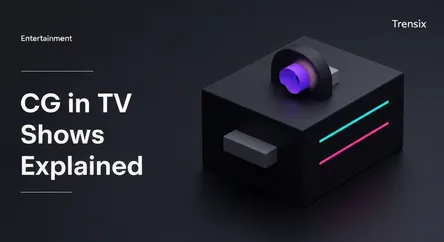Entertainment
CG in TV Shows Explained

Discover what Computer-Generated Imagery (CG) is and how it's revolutionizing modern television with stunning visual effects and immersive worlds.
What is it?
Computer-Generated Imagery (CG) refers to the use of computer graphics to create or enhance visual content in television shows. This can range from subtle environmental enhancements and digital characters to entire fantastical worlds and explosive special effects. Unlike practical effects, which are physically created on set, CG is produced digitally by artists and technicians during post-production, allowing for limitless creative possibilities that defy the constraints of reality.
Why is it trending?
CG is trending in television because technological advancements have made it more affordable and sophisticated than ever before. This accessibility allows TV productions, once limited by budget compared to blockbuster films, to create visually stunning and epic-scale narratives. Shows like House of the Dragon and The Mandalorian have set new standards, using CG to build immersive worlds and create photorealistic creatures that captivate audiences. The demand for high-concept genre shows has further fueled the necessity and popularity of advanced visual effects.
How does it affect people?
For viewers, CG elevates the entertainment experience by making the impossible seem real, fostering a deeper sense of immersion and wonder. It enables storytellers to visualize grand concepts without compromise, shifting audience expectations for cinematic-quality visuals from their favorite series. In the industry, it has created a booming sector for VFX artists and technicians, though it also sparks debate about over-reliance on digital effects versus the tangible artistry of practical effects. Ultimately, CG has fundamentally changed how stories are told and experienced on the small screen.